Surroundings
Your hotel near the Chianciano thermal baths
Hotel Nanda is located in Chianciano Terme, near the hills that separate the upper Val d'Orcia from the Valdichiana. Nearby you can visit beautiful and evocative places, unique in their natural beauty and for their historical and artistic importance. An added value of these beautiful territories is of course the gastronomic journey and therefore the typical local products, such as oil, wine, cheeses, pici
and much more. Discover the places of greatest interest in the surroundings of the hotel near the thermal baths of Chianciano.
The city of Pienza
The Hotel Nanda in Chianciano Terme is located near the town of Pienza, a small village that until 1462 was known as Castello di Corsignano. The birth of Enea Silvio Piccolomini, who became Pope Pius II, was the event that changed its fortunes since the pope wanted to make it the ideal city of the Renaissance, entrusting the project to the architect Rossellino.
Pienza is part of the natural, artistic and cultural heritage of UNESCO and is famous for its excellent olive oil and tasty pecorino cheese.
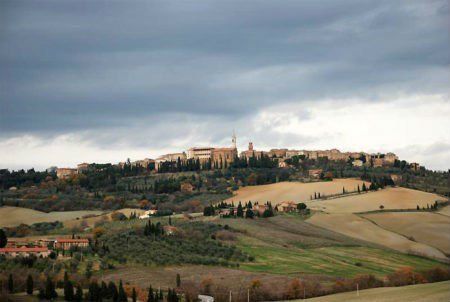
Slide title
Write your caption hereButton
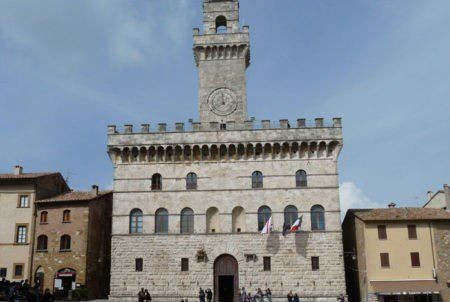
Slide title
Write your caption hereButton
The city of Montepulciano
From the Hotel Nanda in Chianciano Terme you can visit the nearby town of Montepulciano, a charming medieval village with an S-shaped structure, enclosed within three circles of walls, built all around the fourteenth century. From the beginning of the fifteenth century to the mid-sixteenth century, Montepulciano had its golden age, marked by political stability, cultural prestige and artistic flourishing that made it define the "pearl of the sixteenth century". Later, between the 15th and 16th centuries, some historical figures contributed to give fame to Montepulciano, the great poet Angelo Poliziano, the architects Antonio da Sangallo il Vecchio, Jacopo Barozzi known as Vignola and Baldassarre Peruzzi. Montepulciano is famous for the richness of the vineyards from which the famous noble wine of Montepulciano DOCG is obtained.
The city of Chiusi
From Hotel Nanda in Chianciano Terme you can visit the nearby town of Chiusi, one of the oldest Etruscan cities. Here you can visit numerous archaeological sites of great interest, including the necropolis and the Etruscan museum, important testimonies of this ancient civilization.
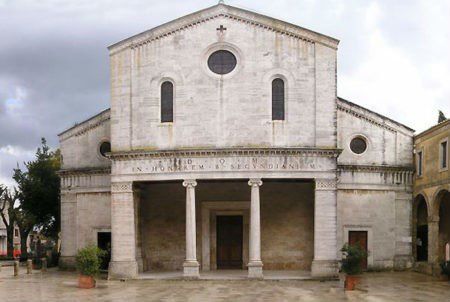
Slide title
Write your caption hereButton
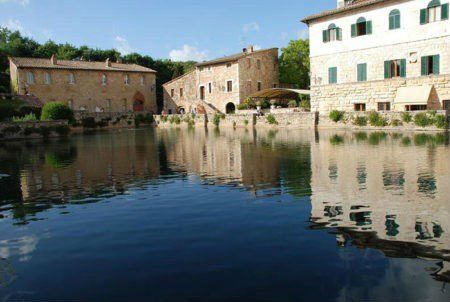
Slide title
Write your caption hereButton
The town of Bagno Vignoni
The Hotel Nanda in Chianciano Terme is near the town of Bagno Vignoni, a village located within the Natural Artistic Park of the Val d'Orcia, near the Via Francigena.
In the center of the city there is the Piazza "Sorgenti", a sixteenth-century basin, which contains a source of hot thermal water of volcanic origin, present in the subsoil.
The Val D'Orcia
During your stay at the Hotel Nanda in Chianciano Terme you can admire the nearby Val d'Orcia, a wide and suggestive valley crossed by the river Orcia, which gives it its name. The characteristic tree of this territory is the cypress. The valley, which is also an important natural, artistic and cultural park, has been recognized by UNESCO as a World Heritage Site.
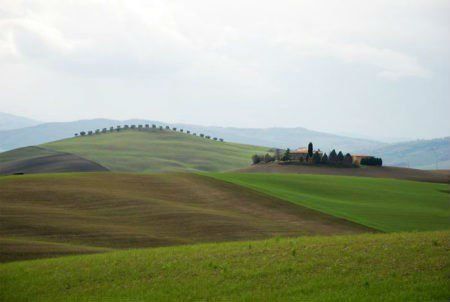
Slide title
Write your caption hereButton
The thermal baths facilities
The structure of the Sensory Spa, in the thermal park of the Acqua Santa was designed by Paolo Bodega. With innovative architectural solutions, it is inspired by the criteria of natural and ayurvedic medicine, with sensory pathways aimed at rebalancing the energy that flows inside of the individual and the chakras through the harmonization of the five elements: Water, Fire, Earth, Air and Ether.
Four courses are planned, each with specific characteristics:
PURIFYING PATH: indicated for detoxifying the body and mind.
REBALANCING PATH: indicated to bring body, mind and spirit back into harmony.
ENERGIZING PATH: indicated for all problems of psycho-physical deterioration.
RELAXING PATH: indicated for those suffering from stress and anxiety.
Within the routes there are numerous treatments:
- aromatherapy;
- sensory tub;
- Turkish bath;
- chromotherapy and music therapy;
- salt pans;
- Ice Crash and cold mists;
- melmarium and calidarium;
- energy pyramid;
- walk in the river;
- emotional showers;
- relaxation pools;
- Etruscan sauna;
- Finnish sauna;
- room of inner silence;
- relaxation area and herbal tea room;
- cave of the source.
The thermal pools of Chianciano are named after Theia, "she who shines from afar", who was the mother of Selene in Etruscan mythology.
Theia, "the Bath of the Etruscans", is fed by the water from the thermal spring of the Sillene plant. The waters, rich in carbon dioxide, calcium carbonate, bicarbonates and sulphates, have a temperature between 34°C and 37°C.
There are four swimming pools, three of which are indoor and one outdoor, all connected together, for a total of about 550 square meters.
The pools are equipped with jacuzzi, water jets, barrels, swan necks and wells.
Theia pools are located in a naturalistic context of great beauty and allow you to combine wellness and relaxation.
The water of the Montepulciano thermal baths springs from the sources of Sant'Albino (Montepulciano); it is a sulphurous mineral salobromoiodic calcium-magnesium bicarbonate water, very rich in carbon dioxide and therefore with antiseptic, anticartic, antispasmodic and antiallergic properties.
Due to their properties, the waters are particularly indicated for the treatment of otorhinolaryngological and respiratory diseases through inhalations and aerosols, gynecological diseases, rheumatic diseases and dermatological diseases.
In addition to traditional thermal treatments, the Montepulciano thermal baths also offers other diagnostic and therapeutic tools, such as:
- Audiology and Vestibology Center;
- Center of Rhinology;
- Broncho-pneumology center, specialized in the treatment of asthma, bronchitis and pulmonary emphysema;
- Vascular and Orthopedic Rehabilitation Center;
- Pediatric spa center specialized in the treatment of respiratory and ear-nose-throat diseases in children, such as bronchitis, bronchial asthma, recurrent rhinitis and tonsillitis.
The main spa treatments carried out here have an agreement with the National Health Service. The health facility is completed by a wellness center where massages, thermal muds, hydromassages, atomized showers, treatments against cellulite, always with the use of thermal waters and their properties, are practiced.
The thermal baths of Chianciano
Chianciano has been famous since ancient times for its waters. The thermal baths have an agreement with the National Health Service.
There are four springs, namely the Acqua Santa, the Acqua di Sillene, the Acqua di Fucoli and the Acqua di Sant'Elena.
Acqua Santa is a thermal mineral water, classified as bicarbonate-sulphate calcium. It springs at a temperature of just over 32°C; it is particularly indicated for diseases of the liver and biliary tract. The analysis carried out and the experiences accumulated over many years, have shown that it is particularly suitable for all the after-effects of hepatitis, for the inflammations consequent to the prolonged use of drugs, for liver failure, for calculosis and all that pertains to a poor functionality of the liver also resulting from outcomes of operations.
Drink it in the morning on an empty stomach, for recommended treatment cycles of at least 12 days.
The Acqua di Sillene (also known as Sant'Agnese) emerges from the bottom of the crater of an extinct volcano (temperature 38 ° C), from here it flows into the bathing pools for the treatment of cardiovascular diseases. Diving in the warm embrace of a tonic bath or therapeutic mud is the best remedy to completely reactivate the circulation.
Treatments with Acqua Sillene are carried out by balneotherapy and mud treatments (mud made up of clay "matured" by mixing in Thermal Water and heated to a temperature of about 48 ° C).
Fucoli Water is used for the hydropinic therapy of diseases of the digestive tract has a temperature at the source of about 17 °, it is therefore a cold mineral water and is classified as bicarbonate-sulphate-calcium water. It is drunk in the afternoon, with a complete digestive process.
Come and discover Chianciano Terme and the surrounding area!
HOTEL NANDA
Via Tagliamento, 9 / A - 53042 Chianciano Terme (SI)
+39 0578 63571
| hotel.nanda@libero.it
VAT Reg. No 00549220523 | Legal Information
| Privacy Policy and Cookie Policy





